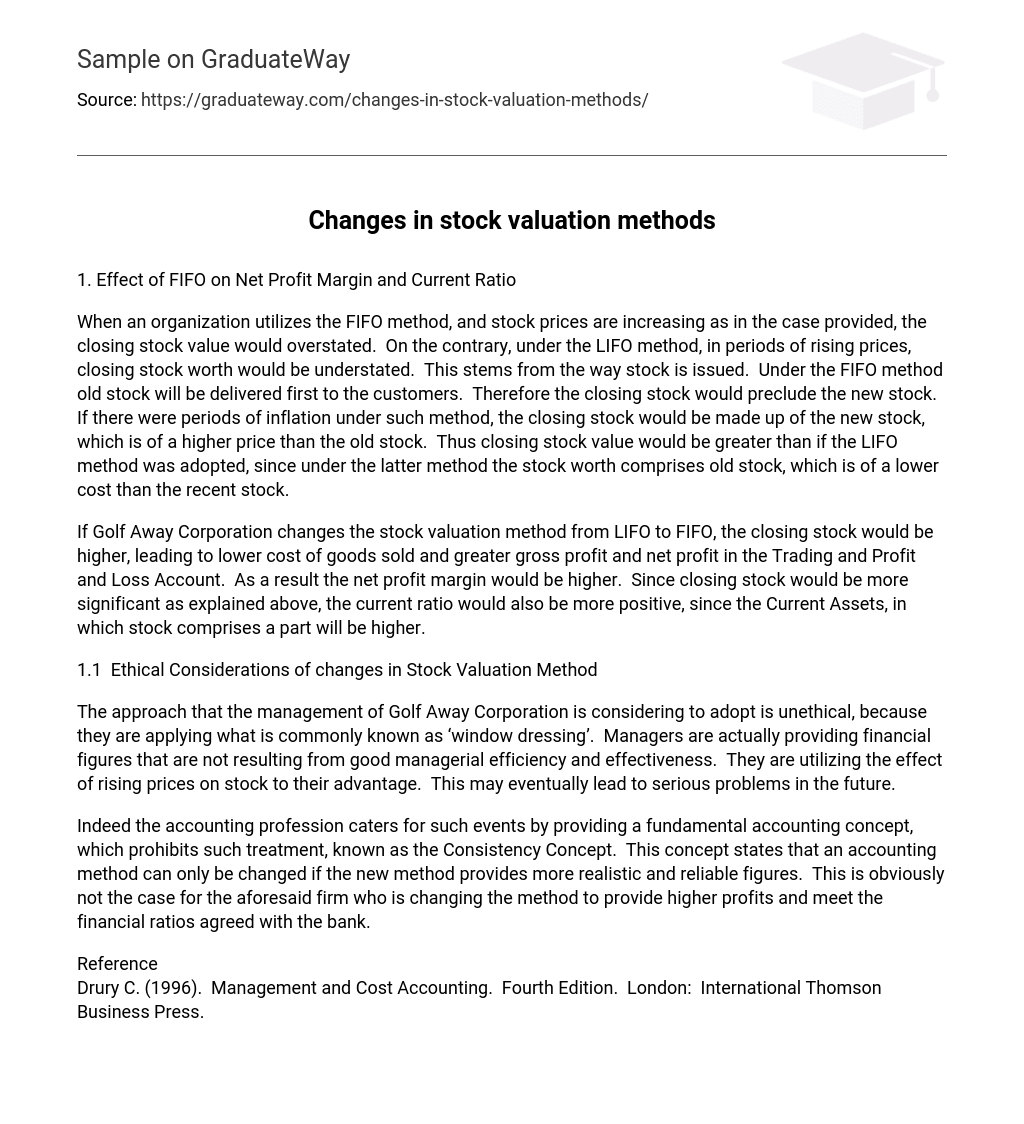1. Effect of FIFO on Net Profit Margin and Current Ratio
When an organization utilizes the FIFO method, and stock prices are increasing as in the case provided, the closing stock value would overstated. On the contrary, under the LIFO method, in periods of rising prices, closing stock worth would be understated. This stems from the way stock is issued. Under the FIFO method old stock will be delivered first to the customers. Therefore the closing stock would preclude the new stock. If there were periods of inflation under such method, the closing stock would be made up of the new stock, which is of a higher price than the old stock. Thus closing stock value would be greater than if the LIFO method was adopted, since under the latter method the stock worth comprises old stock, which is of a lower cost than the recent stock.
If Golf Away Corporation changes the stock valuation method from LIFO to FIFO, the closing stock would be higher, leading to lower cost of goods sold and greater gross profit and net profit in the Trading and Profit and Loss Account. As a result the net profit margin would be higher. Since closing stock would be more significant as explained above, the current ratio would also be more positive, since the Current Assets, in which stock comprises a part will be higher.
1.1 Ethical Considerations of changes in Stock Valuation Method
The approach that the management of Golf Away Corporation is considering to adopt is unethical, because they are applying what is commonly known as ‘window dressing’. Managers are actually providing financial figures that are not resulting from good managerial efficiency and effectiveness. They are utilizing the effect of rising prices on stock to their advantage. This may eventually lead to serious problems in the future.
Indeed the accounting profession caters for such events by providing a fundamental accounting concept, which prohibits such treatment, known as the Consistency Concept. This concept states that an accounting method can only be changed if the new method provides more realistic and reliable figures. This is obviously not the case for the aforesaid firm who is changing the method to provide higher profits and meet the financial ratios agreed with the bank.
Reference
Drury C. (1996). Management and Cost Accounting. Fourth Edition. London: International Thomson Business Press.





